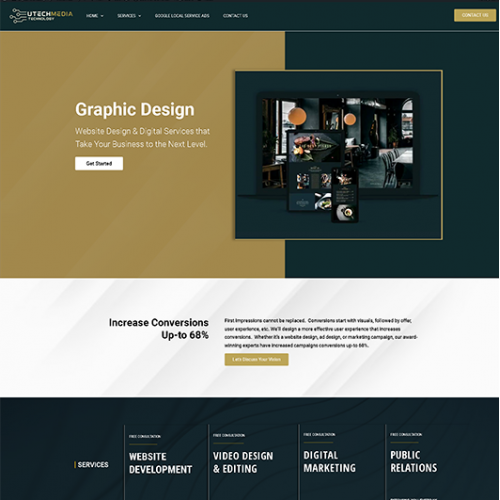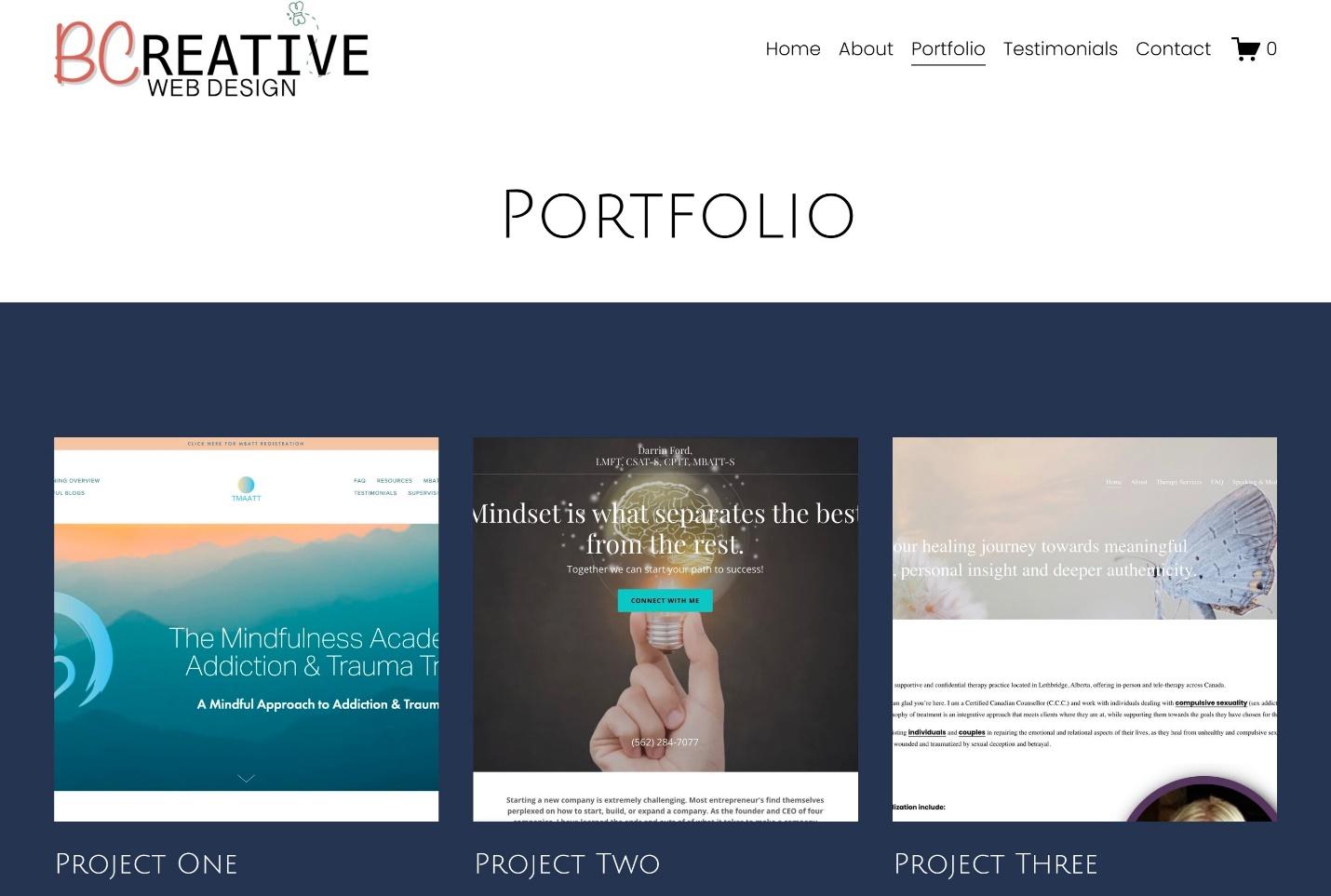Website Design Solutions for Startups on a Budget
Website Design Solutions for Startups on a Budget
Blog Article
Important Concepts of Site Design: Producing User-Friendly Experiences
By concentrating on individual requirements and choices, designers can foster engagement and contentment, yet the implications of these concepts extend beyond mere functionality. Comprehending exactly how they intertwine can considerably influence a website's general effectiveness and success, motivating a more detailed evaluation of their individual roles and collective influence on customer experience.

Relevance of User-Centered Layout
Prioritizing user-centered style is crucial for developing efficient internet sites that satisfy the needs of their target audience. This technique places the individual at the forefront of the layout procedure, ensuring that the internet site not just functions well yet also reverberates with customers on a personal level. By understanding the users' objectives, actions, and choices, developers can craft experiences that cultivate involvement and contentment.

Moreover, embracing a user-centered design ideology can cause improved access and inclusivity, catering to a diverse target market. By considering different individual demographics, such as age, technical efficiency, and cultural backgrounds, designers can develop web sites that rate and practical for all.
Eventually, focusing on user-centered layout not only boosts user experience however can additionally drive essential company results, such as raised conversion rates and client loyalty. In today's affordable digital landscape, understanding and prioritizing customer demands is a critical success aspect.
Intuitive Navigating Frameworks
Efficient web site navigation is frequently a crucial consider boosting customer experience. Instinctive navigating frameworks allow users to discover details rapidly and successfully, lowering stress and boosting involvement. An efficient navigating food selection need to be basic, rational, and regular throughout all web pages. This allows users to anticipate where they can find details web content, hence advertising a seamless surfing experience.
To produce instinctive navigation, developers ought to prioritize quality. Tags must be detailed and acquainted to customers, preventing lingo or ambiguous terms. An ordered structure, with main groups resulting in subcategories, can better aid individuals in understanding the relationship in between various sections of the site.
In addition, including visual hints such as breadcrumbs can direct individuals with their navigation path, enabling them to easily backtrack if required. The incorporation of a search bar likewise enhances navigability, granting individuals direct access to web content without having to browse with multiple layers.
Receptive and Flexible Formats
In today's electronic landscape, guaranteeing that internet sites operate flawlessly throughout different devices is essential for individual satisfaction - Website Design. Flexible and responsive designs are 2 key techniques that allow this capability, catering to the diverse variety of screen dimensions and resolutions that users may run into
Receptive formats use liquid grids and adaptable photos, enabling the web site to immediately adjust its elements based on the screen dimensions. This strategy offers a consistent experience, where material reflows dynamically to fit the viewport, which is especially valuable for mobile users. By utilizing CSS media questions, designers can produce breakpoints that enhance the layout for different gadgets without the demand for different layouts.
Adaptive formats, on the other hand, utilize predefined layouts for specific screen sizes. When an individual accesses the website, the server spots the gadget and serves the proper format, making certain an enhanced experience for differing resolutions. This can result in much faster packing times and enhanced efficiency, as each format is tailored to the tool's abilities.
Both responsive and flexible styles are critical for enhancing individual involvement and fulfillment, ultimately contributing to the web site's general effectiveness in satisfying its goals.
Constant Visual Hierarchy
Developing a regular visual hierarchy is crucial for guiding users via a site's web content. This principle makes sure that details exists in a fashion that is both intuitive and appealing, enabling users to easily browse and understand the product. A distinct pecking order uses different design components, such as dimension, spacing, color, and comparison, to develop a clear distinction between various types of web content.

In addition, constant application of these visual signs throughout the website cultivates experience and depend on. Individuals can swiftly learn to acknowledge patterns, making their communications extra efficient. Ultimately, a solid visual hierarchy not just improves customer experience however likewise enhances overall site functionality, encouraging much deeper interaction and facilitating the desired actions on a site.
Accessibility for All Users
Access for all individuals is a fundamental element of site layout that makes sure everyone, despite their handicaps or capabilities, can engage with and advantage from online web content. Creating with ease of access in mind includes applying practices that fit diverse user requirements, such as those with aesthetic, acoustic, electric motor, or cognitive problems.
One vital standard is to comply with the Web Web Content Access Standards (WCAG), which provide a framework for producing accessible digital experiences. This includes using sufficient color contrast, offering message options for images, and ensuring that navigating is keyboard-friendly. Furthermore, utilizing receptive design methods makes certain that websites function properly throughout different tools and display sizes, better hop over to these guys enhancing availability.
An additional vital element is using clear, concise language that stays clear of lingo, making material understandable for all individuals. Engaging users with assistive modern technologies, such as screen visitors, calls for mindful focus to HTML semiotics and ARIA (Available Abundant Net Applications) duties.
Eventually, prioritizing ease of access not just satisfies legal responsibilities yet additionally increases the target market reach, promoting inclusivity and boosting individual satisfaction. A commitment to availability mirrors a commitment to creating equitable digital environments for all customers.
Verdict
To conclude, the necessary principles of site style-- user-centered style, intuitive navigating, receptive designs, consistent visual hierarchy, and accessibility-- jointly add to the creation of easy to use experiences. Website Design. By prioritizing find more info user demands and guaranteeing that all individuals can efficiently involve with the website, developers enhance usability and foster inclusivity. These concepts not just improve user satisfaction however likewise drive positive organization outcomes, ultimately demonstrating the crucial importance of thoughtful web site style in today's electronic landscape
These techniques provide invaluable understandings right into user expectations and discomfort factors, allowing designers to tailor the web site's functions and material as necessary.Reliable website navigation is commonly a vital factor in improving individual experience.Establishing a regular aesthetic here hierarchy is pivotal for guiding individuals through an internet site's content. Ultimately, a strong aesthetic hierarchy not only improves customer experience however additionally boosts overall site use, encouraging much deeper interaction and facilitating the wanted activities on a website.
These principles not just enhance user complete satisfaction however additionally drive positive business outcomes, inevitably demonstrating the critical importance of thoughtful web site design in today's electronic landscape.
Report this page